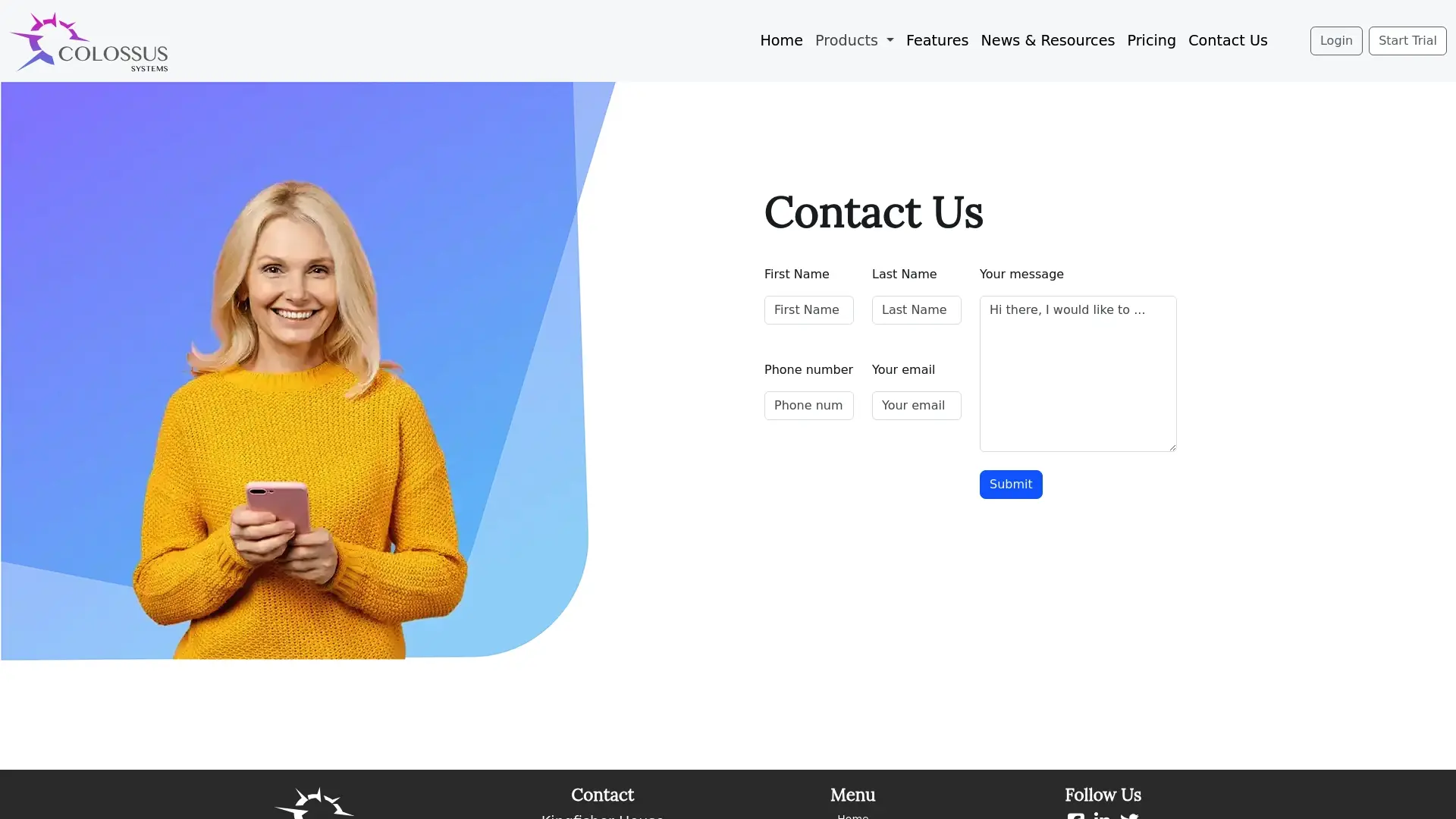Understanding Membership CRM: Key Concepts and Importance

Membership organisations are embracing digital tools to keep pace with evolving member expectations. Oddly enough, while many still rely on spreadsheets or generic software, a dedicated membership CRM can fundamentally change everything. In fact, organisations using advanced CRM systems experience up to 30 percent higher member retention rates, reshaping what is possible for engagement and growth.
Table of Contents
- What Is Membership CRM And Its Purpose?
- The Importance Of Membership CRM For Organisations
- Key Features And Components Of Membership CRM
- How Membership CRM Enhances Member Engagement
- Real-World Applications Of Membership CRM In Organisations
Quick Summary
| Takeaway | Explanation |
|---|---|
| Membership CRM is essential for engagement | It transforms interactions into meaningful relationships, enhancing member loyalty and satisfaction. |
| Automate administrative tasks for efficiency | Reduces manual workload and errors, allowing focus on strategic initiatives and member experiences. |
| Leverage data for targeted strategies | Provides insights into member behaviour to enhance communication and marketing efforts. |
| Personalisation improves member interactions | Tailored communication strategies deepen member relationships and foster engagement. |
| Predictive capabilities enhance retention | Identifying potential disengagement risks allows proactive interventions to maintain membership. |
What is Membership CRM and Its Purpose?
Membership CRM represents a specialised digital solution designed to help organisations manage, track, and enhance their relationships with members comprehensively. Unlike generic customer relationship management platforms, membership CRM focuses specifically on the unique requirements of membership-based organisations, providing tailored tools for engagement, retention, and growth.
Understanding the Core Functionality
At its foundation, membership CRM serves as a centralised database that captures and organises member information, interactions, and engagement history. Learn more about advanced CRM integration reveals that these systems go beyond simple contact management, offering nuanced capabilities for tracking membership lifecycles, automating communication, and generating meaningful insights.
Key aspects of membership CRM functionality include:
- Comprehensive member profile management
- Automated renewal and communication workflows
- Detailed engagement tracking and analytics
- Seamless event registration and management
Strategic Purpose and Organisational Impact
The primary purpose of membership CRM extends far beyond administrative convenience. According to research by the Nonprofit Technology Network, these systems enable organisations to transform member interactions from transactional exchanges to meaningful, personalised relationships.
 By consolidating member data and interaction history, organisations can develop targeted strategies that improve member satisfaction, increase retention rates, and ultimately drive organisational growth.
By consolidating member data and interaction history, organisations can develop targeted strategies that improve member satisfaction, increase retention rates, and ultimately drive organisational growth.
Membership CRM empowers organisations to make data-driven decisions, understand member preferences, and create more engaging, responsive experiences that align with modern digital expectations. The system acts as a strategic tool that bridges communication gaps, streamlines administrative processes, and provides actionable insights for continuous improvement.
The Importance of Membership CRM for Organisations
Membership CRM has transformed from a technological luxury to a strategic necessity for organisations seeking sustainable growth and meaningful member engagement. By integrating sophisticated data management and communication tools, these platforms enable organisations to navigate increasingly complex membership landscapes with precision and insight.
Enhancing Organisational Efficiency
Modern membership organisations face significant challenges in managing diverse member interactions and expectations. Discover strategies for website integration demonstrates how CRM systems streamline administrative processes, reducing manual workload and minimising potential human errors. By automating routine tasks such as membership tracking, renewal notifications, and communication workflows, organisations can allocate resources more strategically.
Key efficiency benefits include:
![]()
- Reduced administrative overhead
- Faster response times to member inquiries
- Consistent communication across multiple channels
- Automated reporting and data management
Strategic Decision Making and Member Insights
According to research by the Association Management Technology Report, organisations using advanced CRM systems can unlock deeper understanding of member behaviours, preferences, and engagement patterns. These insights enable targeted marketing strategies, personalised communication, and data-driven programme development.
By centralising member data and providing advanced analytics, membership CRM transforms raw information into actionable intelligence. Organisations can identify trends, predict member retention risks, and develop proactive engagement strategies that foster long-term loyalty and participation. The ability to segment members, track individual journeys, and respond with tailored approaches represents a significant competitive advantage in today’s dynamic membership ecosystem.
Key Features and Components of Membership CRM
Membership CRM systems represent sophisticated technological solutions comprising multiple integrated components designed to support complex organisational needs. These platforms blend advanced data management, communication tools, and strategic intelligence to create comprehensive member engagement ecosystems.
Core Technological Architecture
Explore comprehensive CRM system guides reveals that modern membership CRM platforms are built upon robust technological infrastructures enabling seamless data integration and processing. The architectural framework typically encompasses multiple interconnected modules that work synergistically to provide holistic member management capabilities.
Key technological components include:
- Centralised member database
- Automated workflow management systems
- Advanced reporting and analytics engines
- Secure communication interfaces
- Integration capabilities with external platforms
Advanced Functional Capabilities
According to research from TechSoup, membership CRM systems go beyond basic contact management by offering sophisticated segmentation and personalisation features. These platforms enable organisations to categorise members based on multidimensional criteria such as engagement levels, participation history, demographic information, and specific interaction patterns.
The functional components transform raw member data into strategic intelligence, allowing organisations to develop nuanced engagement strategies.
Below is an overview of the core features and advanced capabilities of a Membership CRM, structured to help differentiate between foundational and enhanced functionalities.
| Feature Type | Description |
|---|---|
| Centralised Member Database | Stores all member profiles, interaction history, and demographic data |
| Automated Workflow Management | Handles membership renewals, communication, and routine administrative tasks |
| Advanced Reporting & Analytics | Provides insights into trends, engagement metrics, and retention patterns |
| Secure Communication Interfaces | Facilitates consistent, confidential contact across multiple channels |
| Integration Capabilities | Connects seamlessly with external systems and platforms |
| Sophisticated Segmentation | Enables targeting by engagement level, participation, or demographics |
| Personalisation Features | Delivers tailored messaging and adaptive content based on member interests |
| Predictive Retention Tools | Identifies potential disengagement risks and suggests proactive actions |
How Membership CRM Enhances Member Engagement
Membership CRM represents a transformative approach to building and maintaining dynamic, personalised member relationships through intelligent technological platforms. By leveraging advanced data analytics and communication tools, these systems create more meaningful, responsive interactions that transcend traditional membership management approaches.
Personalisation and Targeted Communication
Learn about advanced engagement strategies highlights the critical role of personalisation in modern member interactions. Membership CRM enables organisations to move beyond generic communication by developing highly tailored engagement strategies based on individual member profiles, preferences, and historical interactions.
Key personalisation capabilities include:
- Automated, context-aware communication triggers
- Dynamic content adaptation based on member interests
- Segmented messaging across multiple communication channels
- Personalised member journey mapping
Predictive Engagement and Retention Strategies
According to research from the Nonprofit Technology Network, membership CRM systems provide unprecedented insights into member behaviour patterns, enabling organisations to develop proactive retention strategies. By analysing interaction data, engagement metrics, and participation trends, these platforms help organisations anticipate member needs, identify potential disengagement risks, and design targeted interventions.
The predictive capabilities transform membership management from reactive administrative tasks to strategic relationship building. Organisations can now understand not just what members do, but why they engage, allowing for more nuanced, empathetic approaches to member support and community development.
Real-World Applications of Membership CRM in Organisations
Membership CRM systems have rapidly evolved from theoretical technological solutions to practical tools that drive organisational transformation across diverse sectors. These platforms demonstrate remarkable versatility, enabling organisations to reimagine member engagement strategies through intelligent, data-driven approaches.
Professional Association Management
Explore comprehensive engagement strategies reveals how professional associations leverage membership CRM to streamline complex administrative processes and create more meaningful member experiences. These organisations utilise CRM platforms to manage intricate membership lifecycles, track professional development credits, coordinate event registrations, and maintain detailed professional networking records.
Key application areas include:
- Professional certification tracking
- Continuing education credit management
- Networking event coordination
- Member skill and expertise mapping
Healthcare and Non-Profit Sector Implementation
According to research examining healthcare organizational communication, membership CRM systems play a crucial role in coordinating complex member communications and managing sophisticated outreach programmes. In healthcare and non-profit environments, these platforms enable organisations to track patient interactions, manage donor relationships, and create targeted support programmes with unprecedented precision.
By integrating detailed demographic data, interaction histories, and engagement metrics, membership CRM transforms how organisations understand and respond to their members’ evolving needs. The technology allows for nuanced segmentation, predictive engagement modelling, and personalised communication strategies that significantly enhance member satisfaction and organisational effectiveness.
Unlock Intelligent Member Engagement with Colossus Systems
Struggling to keep up with complex member management and scattered data? The article makes it clear that modern organisations need more than just basic contact management. You need a platform that centralises member information, automates communication, and provides deep insights into engagement. Your ultimate goal is to strengthen relationships, improve retention and make confident, data-driven decisions – all while saving valuable time and resources.

Colossus Systems brings you all these benefits in a single, customisable solution. You can manage events, track member journeys, automate renewals and unlock advanced analytics – all from one platform designed for forward-thinking membership organisations. If you are ready to move from reactive administration to proactive member engagement, now is the time to act. Start building more meaningful connections with your members right away by reaching out through our Contact Us page.
What is Membership CRM and why is it important?
Membership CRM is a specialised digital solution designed to manage and enhance member relationships within organisations. It is important because it allows organisations to transform member interactions into meaningful relationships, improving satisfaction and retention. Start by identifying your organisation’s specific needs to leverage the full potential of a Membership CRM.
How does Membership CRM enhance member engagement?
Membership CRM enhances member engagement through personalised communication and targeted strategies based on individual member data. By automating interactions and tailoring content, organisations can create a more engaging experience. Consider implementing automated communication triggers to respond to member actions within 24 hours.
What are the key features to look for in a Membership CRM?
Key features of a Membership CRM include a centralised member database, advanced reporting, automated workflows, and integration capabilities with external platforms. Look for a system that allows detailed engagement tracking to provide actionable insights. Evaluate these features based on your organisation’s existing processes and goals.
How can Membership CRM improve organisational efficiency?
Membership CRM improves organisational efficiency by automating routine tasks such as membership renewals and communication workflows, reducing manual workload and errors. This enables quicker responses to member inquiries, improving overall service delivery. Aim to reduce administrative tasks by approximately 30% by integrating a Membership CRM.
What steps should an organisation take to implement Membership CRM?
To implement a Membership CRM, organisations should first assess their specific needs and define objectives for member engagement. Next, select a platform that aligns with these needs, followed by integrating it with existing systems. Plan to conduct training sessions for staff to ensure smooth adoption within 30 days of implementation.